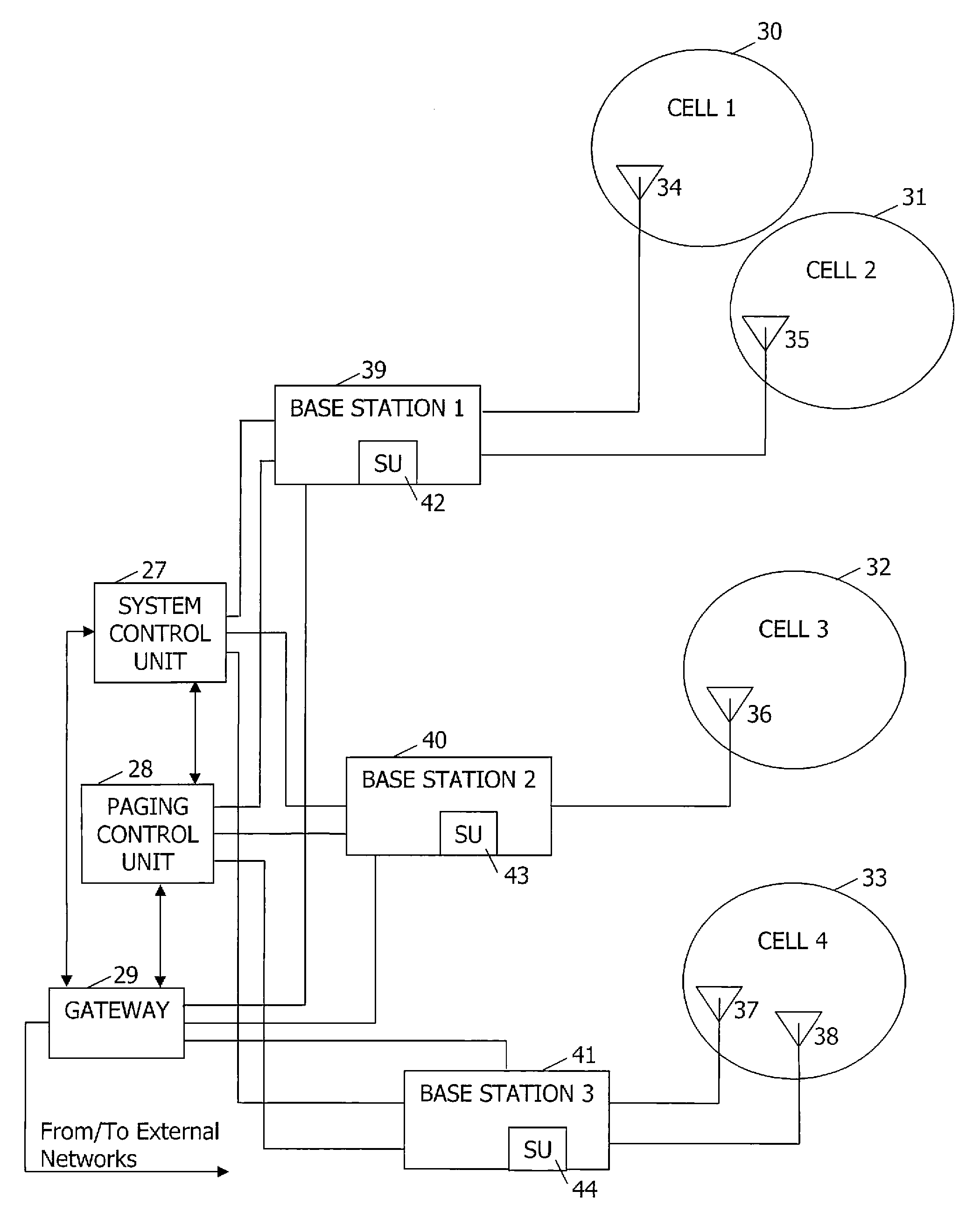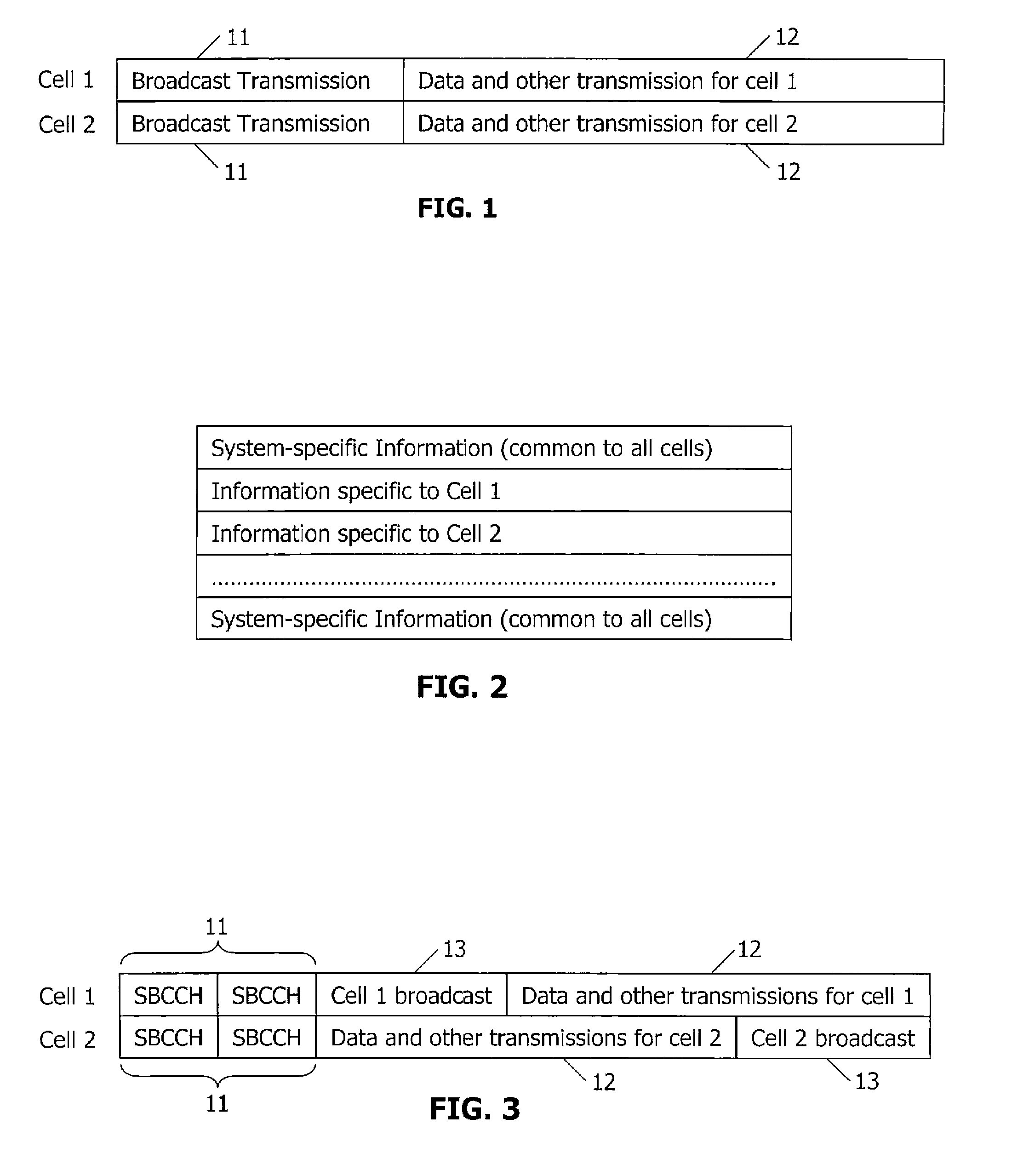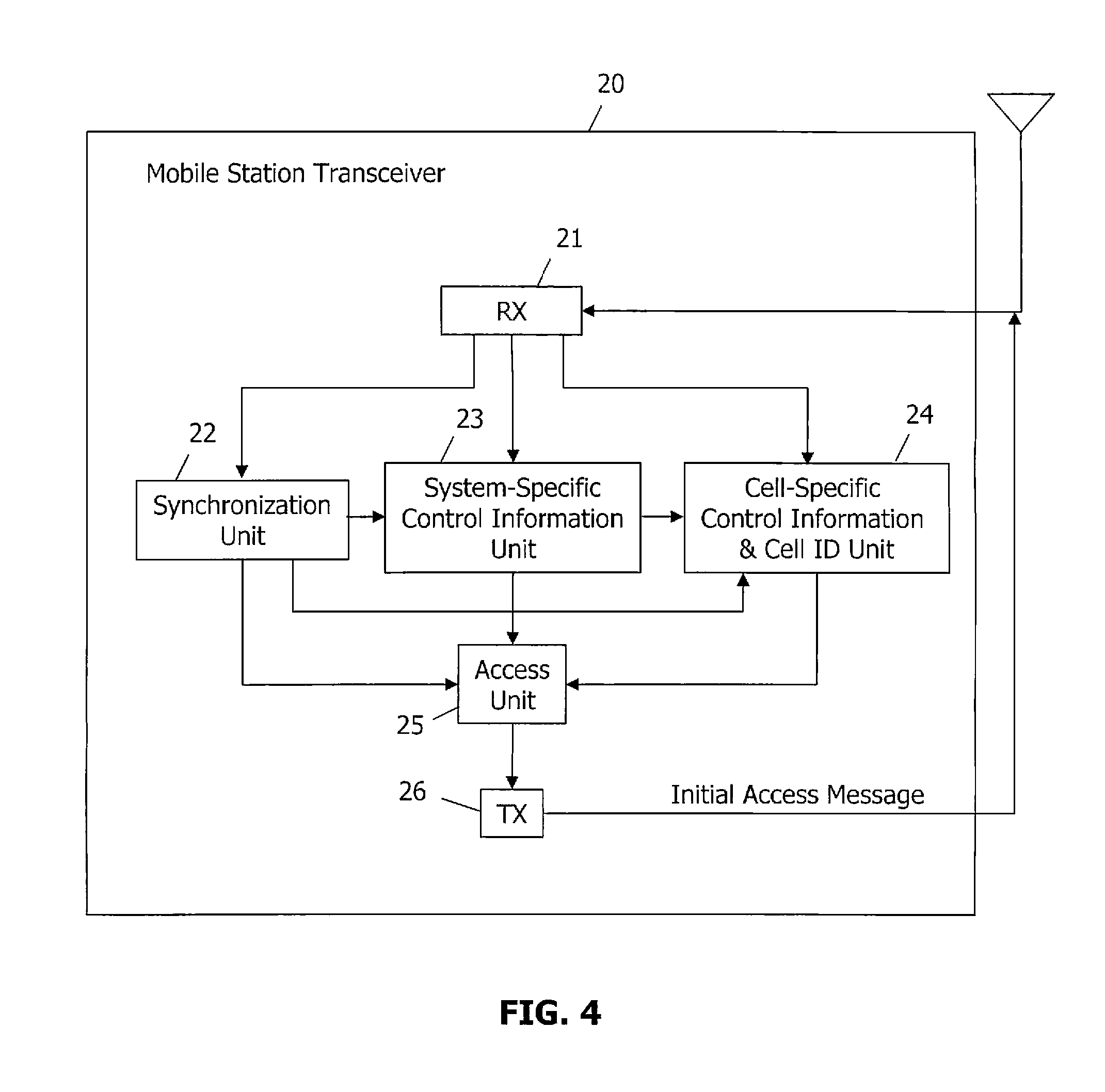Broadcast-centric cellular communication system, method, and mobile station
a cellular communication system and broadcast-centric technology, applied in the field of mobile radio telecommunication systems, can solve the problems of inability to exploit the path combination of different base stations, system configuration not allowing the use of macro-diversity to enhance system synchronization, and the solution in use for broadcasting system information in conventional cellular systems cannot exploit any of the advantages provided, so as to improve the performance of system information delivery and improve the performance of broadcast channel performan
- Summary
- Abstract
- Description
- Claims
- Application Information
AI Technical Summary
Benefits of technology
Problems solved by technology
Method used
Image
Examples
first embodiment
[0036]FIG. 1 is an illustrative drawing of the transmission sequences utilized in two cells in the present invention. All cells transmit the broadcast information 11 common to all cells at the same time with some periodicity. At other times, data and other (possibly control) transmissions 12 to mobiles in each cell are performed. During the broadcast interval, the MS receives the signal and performs demodulation and decoding to exploit the effects of macro-diversity in an advantageous manner.
[0037] During the transmission of the cell-specific information, the system is designed so that the signal structure across cells is different enough (e.g., different pilots, etc.) to permit proper reception in the presence of co-channel interference.
[0038]FIG. 2 is an illustrative drawing of an exemplary message structure of the broadcast message according to the first embodiment.
second embodiment
[0039]FIG. 3 is an illustrative drawing of the transmission sequences utilized in two cells in the present invention. In this embodiment, the broadcast transmission 11 contains only the information that is relevant to all cells. Different cells then separately transmit cell-specific data and other transmissions 12, and cell-specific control information 13. It should be noted that although FIG. 3 shows that cells 1 and 2 transmit the cell-specific information at different times, this is not necessary, and the cell-specific information may be transmitted at the same time. It should also be noted that the Broadcast Information is sent with a common signal format across all cells, but the cell-specific information is preferably sent with different signal formats in each cell so that MSs can distinguish the information from cell-to-cell. The cell-specific information may include a pointer to the broadcast transmission so that the broadcast transmission can be easily found by the MS.
third embodiment
[0040] In the present invention, the system broadcast channel broadcasts system-wide information and a list of cell identifiers. The system broadcast channel may also send some cell-specific information that can be used by the mobile station for the purposes of making an initial access to the system. Alternatively, a portion of the information needed for initial access may be sent on a cell-specific broadcast basis. After the mobile station makes the initial access, the system sends more detailed system information to the mobile station using a point-to-point link. Thus, the relevant information is sent using a combination of system broadcast, possibly cell broadcast, and a point-to-point transaction. This embodiment minimizes the amount of information that is sent on a broadcast basis, thereby saving broadcast resources. In addition, the information sent to the mobile station may be sent using the modulation and coding scheme best suited for the mobile station rather than being dim...
PUM
 Login to View More
Login to View More Abstract
Description
Claims
Application Information
 Login to View More
Login to View More - R&D
- Intellectual Property
- Life Sciences
- Materials
- Tech Scout
- Unparalleled Data Quality
- Higher Quality Content
- 60% Fewer Hallucinations
Browse by: Latest US Patents, China's latest patents, Technical Efficacy Thesaurus, Application Domain, Technology Topic, Popular Technical Reports.
© 2025 PatSnap. All rights reserved.Legal|Privacy policy|Modern Slavery Act Transparency Statement|Sitemap|About US| Contact US: help@patsnap.com



